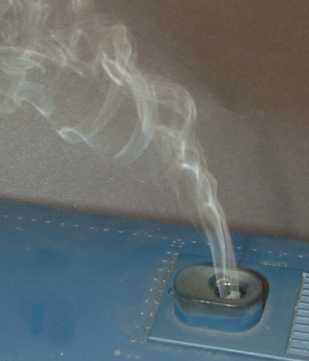In the aftermath of a fire, even if a house has escaped from being completely burned to the ground, it still hasn?t come out of the ordeal unscathed. Charred walls and smoke odor are the scars that one?s abode would bear. But one may still salvage their home from this sorry state by learning how to fix smoke damage.
The two main categories of smoke damage that can befall a home are a discoloration of the walls and ceilings, and bubbling or blistering of paint. The materials that would be needed in how to fix smoke damage are trisodium phosphate (TSP) cleaner, a large sponge, a couple of buckets, some warm water, a pair of rubber cleaning gloves, a pair of goggles, some rags, sandpaper, a putty knife, spackle, paint/primer, and a dehumidifier/fan.
To begin how to fix smoke damage, a gallon of warm water is filled into a bucket, along with a tablespoon of TSP cleaner. Protecting oneself with goggles and rubber gloves, one dips the large sponge into the mixture in the bucket. Afterwards, the soaked sponge is used to thoroughly wipe the charred and discolored areas of the walls a spot at a time, then rinsing the particular areas with water. The procedure may have to be repeated a number of times before the expected results start to appear. Wait for the wall to fully dry before advancing to the second step.
For the next step, use a putty knife to gently scrape off blistered or bubbled paint. Then, smoothly rub down the spot with sandpaper in order to even up the painted areas and the bare drywall. Spackle is then used to cover up dented areas and other sections that would cause a particular area of the wall to appear uneven. Let the spackle fully dry before sanding down the spackled portion to smoothen it up. Cover bare drywall spots with primer; wait for the primed areas to dry before covering them with a fresh layer of paint.
The windows are opened to allow the air to circulate all through the house. Having a fan installed near the smoke damaged area of the house would also be helpful, and would guarantee that the air does not stagnate and would be easy to breathe in. But if the weather is too warm or humid, the windows would most probably have to be kept closed, and one will have to install a dehumidifier to keep stagnant air away.
To get rid of soot on household fabrics and carpets, one will have to get a professional to remove them with the use of a heavy duty vacuum. The carpet has to be cleaned two times, before repairs and then after, in order to make sure that all soot and smoke odor has been eliminated. But in extreme instances where the soot and odor just won?t come off, one might as well get a new carpet altogether.
Saving one?s home from being ravaged by a fire goes on long after the fire itself has already been put out. After rescuing the house from total destruction comes tending to the damages that it had sustained. If one knows how to fix smoke damage properly, they would be able to restore their residence to its former glory, perhaps even appearing as if it had never ever felt the touch of a flame.



